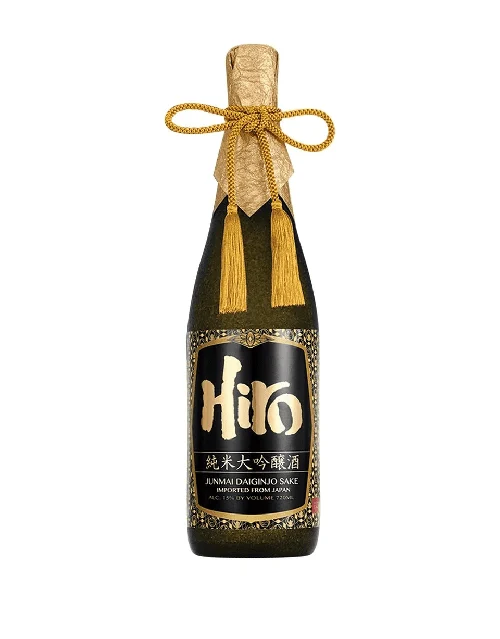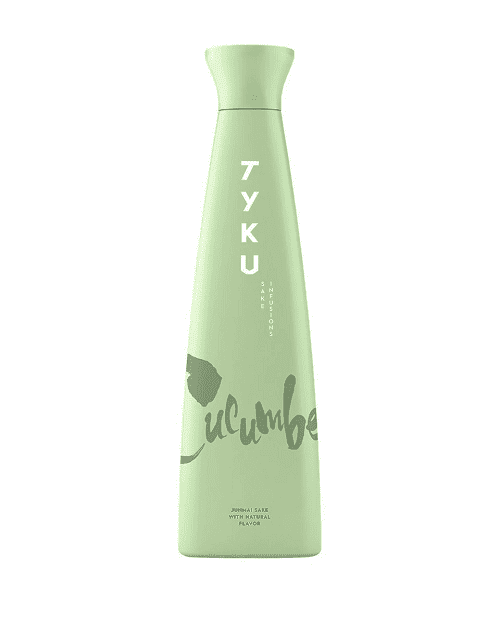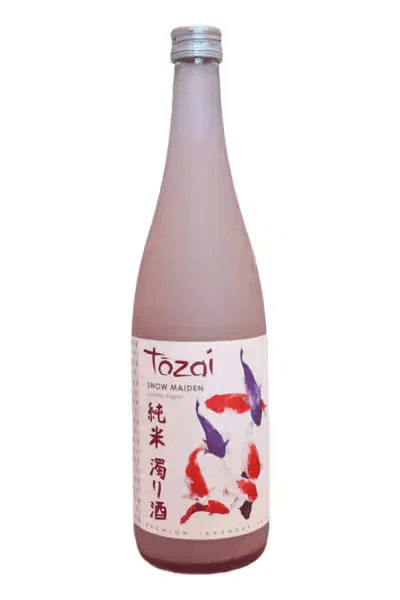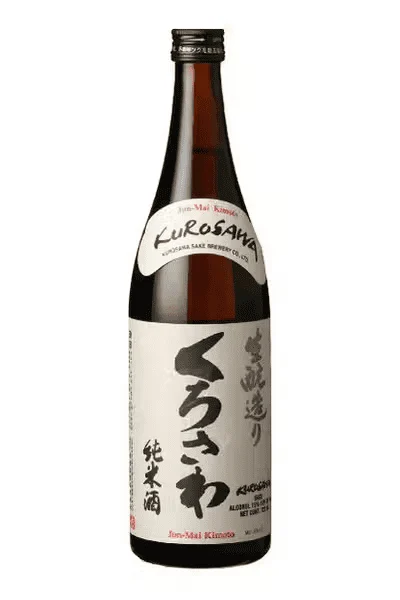Sake is an alcoholic drink made from fermented rice that originated in Japan. It has become more popular across the United States and there are now some companies brewing sake in areas like California.
Sake is made up of four basic ingredients – rice, Koji, yeast, and water. Different grains of rice are used to produce different flavors, and adjustments are made to the brewing process to create varying styles of sake.
Drinking sake is a great way to immerse yourself in Japanese culture, and it pairs brilliantly with a lot of Asian cuisine.
It is also an excellent ingredient to add to cocktails, especially if you find a sake that has been infused with a particular flavor which would complement your cocktail.
You might want to try sake as an alternative to wine – it tends to be less acidic and has lower calories. Sake is also naturally gluten free which makes it a great alternative to beer for people who can’t consume gluten.
Whether you are new to sake or you are already a fan, finding good quality sake online can be a challenge. We have made this easier for you by reviewing 10 of the best sake products you can buy online.
Keep reading to find out more. If you are still struggling to choose which sake you want to buy then have a look at our buyer’s guide, where you will find some useful advice on how to narrow down your choice.
Product Reviews
1. Gekkeikan Sake
No products found.
This sake which is available to buy from Amazon is imported from Japan, where it is extremely popular. It is known for having a clean taste and a light feeling in the mouth.
With bright flavor notes of freshly cut grass and fragrant fennel, this sake is the perfect accompaniment to Japanese cuisine like stir fries and grilled fish. This sake is best enjoyed warmly. This bottle is 750ml with an alcohol content of 15.6%.
The technique that Gekkeikan use to make their sake has been passed down through generations of the family for over 370 years, so if you are looking for traditional Japanese sake then this is the perfect product for you.
This sake is brewed in Kyoto and has the Gold Medal from the National Research Institute of Brewing 32 times.
2. Sho Chiku Bai Sake
No products found.
This sake tastes strongly of plums, with a savory finish that is complex and satisfying. It is brewed in California with the highest grade ingredients in order to create a premium product.
Traditional Japanese brewing techniques are used to make this drink so you can be sure you are getting an authentic taste experience. This particular sake is smooth with a full-bodied flavor.
This makes it an excellent choice to pair with grilled meat or fish. It also goes very well with sushi and teriyaki dishes.
When you serve this sake chilled it is creamy, with vanilla notes and the aromas of macadamia nuts and chai spice. When you serve it at room temperature it takes on a mineraly taste with notes of sourdough bread and an aroma of apples.
If you warm the sake it retains the umami elemen, but with a softer texture and savory flavors of salted nuts.
3. TY KU Sake Junmai Ginjo Black
This premium sake is in the top 6% of sake in the world when it comes to quality. It is made from a very special blend of sake rice grains – Yamada Nishiki and Akebono.
These grains go through a purification process which polishes the rice to the extent that only 55% of the grain remains, removing impurities and creating a very refined taste.
This sake has won several gold medals, including at the New York World Wine and Spirits Competition. It has flavor notes of peach and vanilla, with a rich texture that feels silky in your mouth. It is best served chilled.
TYKU is a fast growing sake company in the U.S. They use premium non-GMO rice and import the sake from their brewery in Nara, Japan. Their products have between 12 and 15 % alcohol content and are tannin free, sulfite free and gluten free.
4. Hiro Sake Junmai Daiginjo
This sake has a very interesting back story. The ancient recipe is inspired by Jiroemon Takeda, a well-known samurai who enjoyed sake. It is made using high quality rice from the Murakami plain in Niigata region of Japan.
This region is also known for the mineral content of the water which is very important to the brewing process. This sake is handcrafted and bottled in Japan in an establishment that has been in operation since 1635.
It is naturally gluten free and contains no preservatives.
This sake is best served chilled and has a sweet fruity taste. It gives off a light aroma of bananas and melon, with a smooth aftertaste. It would make an excellent aperitif, but also pairs perfectly with crab dishes or seafood salad.
5. TYKU Cucumber Infused Sake
This product is the first cucumber infused sake on the market. It was created to capture the essence of a relaxing day at the spa, with a flavor and aroma that will leave you feeling rejuvenated.
You can drink it on its own, or use it as a component in a cocktail. If you want some inspiration, head to the TYKU website where you will find a list of cocktail recipes to try. The cucumber mule is a lovely combination of cucumber sake, ginger beer, a squeeze of lime, then garnished with fresh mint.
You could also try the sake sangria – cucumber sake, orange liquor, simple syrup and club soda. However you enjoy this sake, it is best served chilled.
As the name suggests, this sake has a crisp, fresh flavor of cucumber which is very refreshing for the palate. This makes it ideal to be served in between courses at a dinner party.
It has a delicate, light feel in the mouth and is very easy to drink as it is less acidic than wine.
6. TYKU Coconut Infused Nigori
You might assume that this coconut infused sake from the highly acclaimed TY KU brewing company is only suitable to be paired with sweet food.
Whilst it does go very well with desserts, it is also perfect for enjoying alongside curries and spicy foods. The sweet coconut cuts through the strong flavors and the milky consistency cools the palate.
It has a silky texture which lends itself very well to certain cocktails. You could make a cocolada with coconut sake, pineapple juice, and a squeeze of lime, garnished with a slice or orange.
Or you could go for a cherry fresher – coconut sake with bitter aperitivo liqueur, club soda and muddled cherries.
As well as the coconut flavor which is to be expected, there are also flavor notes of vanilla which would go very nicely with tropical fruits.
7. Hakutsuru Superior Junmai Ginjo Sake
This delicious sake has an alcohol content of 14.5%. It is made using the renowned natural spring water in Nada which is known as ‘Miyamizu’.
The finest quality rice is brewed meticulously using traditional methods to create a very well balanced final product.
This sake has a flowery, fragrant flavor with a clean and crisp finish. It is smooth, silky, and has just the right level of sweetness to not be overpowering.
You could pair it with a dish that has a sweet element – like grilled meat with a sweet and spicy sauce – or contrast the sweetness with something punchy and powerful like a Japanese curry, or sushi with wasabi dipping sauce.
It is also a very good sake to pair with salty foods like edamame, tempura, sashimi, or steamed clams.
8. Tozai Snow Maiden Junmai Nigori Sake
This sake is on the dryer end of the scale, so it is not a sweet sake. It has a fruity flavor, with notes of honeydew melon and raw pumpkin You may also pick up hints of earthy radish.
It has a creamy finish and fresh aroma with hints of banana and nuts. This would pair really well with pork dishes, or even shellfish. It can also handle being paired with spicy foods like Japanese curry or spicy salmon rolls.
This sake is named after Hanako, the most famous Japanese koi fish that lived for 226 years in icy waters at the bottom of Mount Ontake.
The fish is also known as the flower maiden, and there was a lot of snow in that area so the name snow maiden was used as well. The sake lives up to its name as it has a creamy texture and a snowy appearance.
9. Kurosawa Junmai Kimoto Sake
Whilst you can serve this sake chilled, it is best enjoyed at room temperature as this is when the flavors really come to life. You can even warm it up to really make the most of the rich flavors on the palate.
The best thing about this sake is that it is flexible – you can pair it with anything you like and it will hold its own. This makes it ideal for people who are new to sake as you don’t need to overthink it.
The flavors are smooth and well balanced – strong enough to be picked up by a novice but not so overpowering as to make the drink unapproachable. This will definitely become a firm favorite once you give it a try.
The history of this sake began in 1996 when a Japanese sake importer working in the US set out on a mission to find the best sake to suit American Palates. His name was Jun Tanaka, and he worked alongside the brewery to create this product.
10. Dassai 45 Junmai Daiginjo Sake
This sake has a very elegant flavor and a medium body. It is mildly acidic, with a light and dry taste. It gives off an aroma of gooseberry and zesty lime, with flavor notes of tropical fruits like pineapple and mango.
This sake is ideal for pairing with sushi, sashimi, and meat or fish gyozas. It is rich enough to cut through those flavorsome dishes but without being overpowering and drowning out the flavors of the meal.
Buyer’s Guide
Now that you know more about the 10 best sake products that are available to buy online, it is time to narrow down your choice.
Whether you have tried sake before or not, it can still be tricky to decide which one you think you will enjoy, so we have some advice for you to make the process easier.
One of the first things you should consider is your budget. If you have a higher budget than you can afford one of the more premium bottles of sake.
They tend to be more expensive because the grains of rice go through a more rigorous process of purification. It costs more to process the grains this way, but the result is a much more refined taste with fewer impurities.
If you have a lower budget then the cheaper bottles of sake will still be of excellent quality.
Once you have figured out your budget, have a think about why you are buying the sake- what do you intend to use it for? If you want to serve the sake at a dinner party or with a particular meal then you should find a bottle that pairs well with the flavors of that dish.
If you want to use the sake to make a cocktail then you may want to consider choosing one that has been infused with a particular flavor.
For example, a pimms style cocktail with cucumber infused sake would be lovely, or a pina colada with some coconut infused sake.
Another thing to decide is whether you would prefer the sake to be dry, sweet, or somewhere inbetween. The best way to do this is to think about the wines that you tend to prefer.
Although you cannot make a direct comparison between sake and wine, when it comes to dryness you should be able to get an idea of what you are more likely to prefer.
You can also think about the acidity this way. Sake tends to be less acidic than wine, but it does vary in acidity depending on the variety.
It might be helpful to think about what your priorities are when it comes to sake. If it is important to you to get hold of sake that has been brewed in Japan then you might need to pay more in shipping, or the cost of the product might be higher to allow for the cost of importing the sake from Japan.
Alternatively, you can get some varieties of sake that are brewed in the United states. A lot of these products still use ingredients from Japan, as they are considered to be the best.
Some sake products come with a very rich history. Traditional brewing methods and recipes are often passed down through generations and can be traced back to their origins, sometimes with an interesting story to go alongside of it!
If this is important to you then you could do some additional research on the companies who produce the sake to find out when they were established.
Frequently Asked Questions
What Is The Best Way To Warm Up Sake?
Sake can be enjoyed chilled, room temperature, or warm. You should check the label of the sake you are drinking to find out the recommended serving temperature.
If you want to serve the sake warm, you should decant it into a carafe, then place the carafe in hot water for several minutes. Never boil the sake, as this will affect the flavor.
The ideal temperature for warm sake is between 100 and 105 degrees fahrenheit.
What Is ‘Nigori’ Sake?
Nigori sake is also known as cloudy sake. It is not clear like normal sake, but has a milky appearance.
This is because a small amount of unfiltered rice is purposefully left in the sake to create a rich and creamy taste that differs from the clear, crisp flavors of other types of sake.
How Is Sake Traditionally Served?
Sake was traditionally served from a ceramic or porcelain bottle, and poured into small cups of the same material with a very simple shape – similar to the cups in a traditional Japanese tea set.
Some modern Japanese sake serving sets are made of glass, with a large carafe and small cups. If you want a traditional experience, it is best to try and get hold of a Japanese sake set.
Some people choose to drink sake out of a standard wine glass, and if this is what you prefer then it will still be an enjoyable experience.








